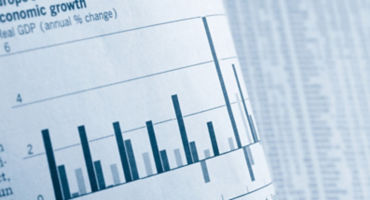Equities
Global equities (-2.7%) declined in October, ending the month with an 8.6% gain year to date, as a rise in long-term government bond yields significantly tightened financial conditions. Inflation continued to fall in most countries and global economic growth was surprisingly resilient but uneven across countries and regions. After a lengthy cycle of aggressive interest-rate hikes, developed market central banks left interest rates unchanged against a backdrop of sharply higher borrowing costs, slowing inflation, and weaker economic growth expectations. The European Central Bank (ECB) held interest rates stable for the first time since June 2022 amid faltering economic activity, while the US Federal Reserve (Fed) indicated that a sustained rise in long-term Treasury yields could substitute for additional hikes in the fed funds rate. The war between Israel and Hamas sparked fears of a broader escalation in military conflict in the Middle East, with the World Bank warning that a prolonged conflict could drive oil and food prices sharply higher. China’s economy rebounded, with third-quarter GDP expanding by 4.9% from a year ago. Nonetheless, existing weakness in the property sector burdened the country’s recovery and investor sentiment.
US
US equities (-2.1%) were pressured by higher long-term Treasury yields, as markets adjusted to the prospect that interest rates will remain higher for longer amid surprising resilience in the economy, the Fed’s unwavering commitment to curb inflation, and an increasing supply of US Treasury bonds. Despite the strains from elevated interest rates and inflation, GDP grew at a larger-than-expected 4.9% annual pace in the third quarter, driven by robust consumer spending, increased business inventories, and higher government spending. However, growth in the months ahead is forecast to slow as the economy contends with a sharp rise in long-term interest rates, which has significantly increased borrowing costs for mortgages, credit cards, auto purchases, and business loans. The Fed left interest rates unchanged on November 1, as expected, after Fed Chair Jerome Powell indicated that higher bond yields could help to slow the economy and reduce inflation, implying a higher bar to raise interest rates if yields stay elevated. A key gauge of inflation — the core Personal Consumption Expenditures Price Index — accelerated 0.3% in September (3.7% annually), in line with estimates, but continued to trend lower on an annual basis. Of the 49% of companies in the S&P 500 Index that had reported third-quarter earnings, the blended year-over-year earnings growth for the index was 2.7%, better than a forecast decline of 0.3%. The United Auto Workers (UAW) struck a tentative deal with the big three US automakers, ending a six-week campaign of strikes.
Economic data released during the month revealed that the US economy remained resilient. In September, headline nonfarm payrolls unexpectedly surged by 336,000 following significant upward revisions to job growth in the prior two months, and the unemployment rate was unchanged at 3.8%. However, other indicators showed a softening labor market; household employment rose at a modest pace, wage growth continued to decelerate, and continuing jobless claims have steadily increased since the beginning of September. Nevertheless, the labor market’s surprising vigor continued to spur consumer spending, hindering the Fed’s efforts to curb inflation. Headline retail sales were well above expectations in September, rising 0.7% in the month, while consumer spending accelerated 0.7% amid robust outlays on goods and services. Growth in spending continued to outpace income gains, fueling concerns about the durability of purchasing in the months ahead. The Conference Board’s Consumer Confidence Index exceeded expectations but waned for the third consecutive month on dimmer views of the present situation and future expectations. Soaring mortgage rates and declining affordability weighed on the housing market. In September, building permits dropped and existing-home sales sank to their lowest since 2010, although an increase in new-home construction and a rebound in new-home sales suggested that demand for new houses is holding up amid very limited housing inventory. Homebuilder sentiment slumped to a nine-month low in October, well below expectations.
The manufacturing sector contracted sharply in October. The Institute of Supply Management (ISM) Manufacturing Index fell much more than expected, to 46.7, on a sizable decline in new orders and employment and lower production, likely reflecting the United Auto Workers’ strike. Growth in the services sector moderated in August, with new orders sliding to their lowest level this year. The reading suggested that services demand may be starting to weaken amid higher financing costs and inflation and smaller wage gains. The National Federation of Independent Businesses (NFIB) Small Business Optimism Index remained extremely weak due to worsening economic expectations and much tighter credit conditions.
Ten of the 11 sectors in the S&P 500 Index (-2.1%) posted negative results. Utilities (+1.3%) was the best-performing sector. Information technology (-0.0%) outperformed, driven by software (+4.7%). Consumer staples (-1.2%) also outperformed, driven by household products (+2.8%). Energy (-6.0%) was the worst-performing sector during the period. Consumer discretionary (-4.5%) also underperformed, driven lower by automobiles (-19.5%) and specialty retail (-4.3%). Health care (-3.2%) also delivered negative returns, led by life sciences tools & services (-12.8%).
Europe
European equities (-3.4%) declined. Eurostat estimated that eurozone GDP shrank by 0.1% during the third quarter. The result was weaker than expected and indicated that the region’s economy stagnated over the past year, as consumers and businesses were strained by rising borrowing costs, weaker global trade, and a surging cost of living. The HCOB Flash Eurozone Composite Purchasing Managers’ Index (PMI) continued to contract in October, and by significantly more than expected, suggesting an accelerated economic downturn and a higher probability of recession. Against a backdrop of falling inflation and a weak economic outlook, the ECB left interest rates unchanged for the first time since June 2022, snapping its unprecedented streak of 10 consecutive rate hikes. The focus now centers on the duration of restrictive policy, with markets anticipating the first rate cut in June 2024. Driven by a decline in energy prices, preliminary eurozone headline inflation fell to 2.9% year over year in October, from 4.3% in September, marking the slowest pace of price increases since July 2021. Core inflation dropped to 4.2%, from 4.5%. Third-quarter earnings for companies in the STOXX 600 Index are forecast to decline by 8.8%.
The downturn in Europe’s manufacturing sector deepened in October; the HCOB Eurozone Manufacturing PMI registered 43.1, down from 43.4 in September, with steep and accelerated contractions in new orders and purchasing activity, and backlogs contributing to another considerable drop in factory production. Weakening business activity and lower demand led to the first decline in employment since January 2021, while input costs and output prices continued to fall. The HCOB Flash Eurozone Composite PMI showed that services sector activity contracted at a faster rate in October, led by the largest reduction in new business since the pandemic. Services input costs, including wages, rose for the third straight month, but output prices continued to soften. The European Commission’s Economic Sentiment Indicator stabilized at 93.3 in October; consumer confidence was unchanged, while industry confidence was broadly stable.
Germany’s (-4.3%) third-quarter GDP declined by 0.1% from the second quarter. The result was better than market expectations but confirmed the country’s position as one of the weakest major economies. The ZEW Indicator of Economic Sentiment significantly increased amid expectations of further reductions in inflation and stable short-term interest rates, while the assessment of the economic situation steadied. In the UK (-3.6%), economic activity contracted for the third consecutive month, with the S&P Global/CIPS Flash Composite PMI registering 48.6. Headline inflation held at 6.7% in September, while core inflation dropped marginally to 6.1%. The economies of France (-3.6%) and Italy (-1.1%) stagnated in the third quarter. The Bank of Italy revised its growth projections for 2023 to 0.7%, sharply lower than its previous forecast of 1.3%, while markets grew increasingly concerned about the government’s finances.
Pacific Basin
Pacific Basin equities (-3.1%) ended lower. In Australia (-3.3%), the Reserve Bank of Australia (RBA) left interest rates unchanged, citing uncertainties due to weak household spending, the lagged impact of higher interest rates, and economic growth headwinds in China — Australia’s largest trading partner. However, higher-than-expected headline and core inflation in September increased the prospect of a November rate hike and sent government bond yields higher. Treasurer Jim Chalmers pointed to higher petrol prices as a large driver of inflation. Additionally, a 0.9% increase in September retail sales was well above consensus estimates, and sales in the prior two months were revised higher. This signaled that consumers were surprisingly resilient to sharply higher interest rates and the recent energy-driven rise in inflation, providing the RBA with greater confidence that the economy can withstand further interest-rate increases. Slowing job growth in September supported the RBA’s view that the labor market is weakening, while the country’s housing crisis worsened as low inventory and surging migration continued to propel rental prices higher. The government ended its trade negotiations with the European Union, saying the current impasse could not be overcome before the Christmas deadline. Both sides acknowledged consensus over most issues, but key items remained unresolved.
In Japan (-3.1%), the Bank of Japan (BOJ) kept short- and long-term interest-rate targets unchanged, as expected. However, markets grew more convinced that the BOJ will end its negative interest-rate policy after it made another incremental step toward unwinding its ultra-loose monetary stimulus. The bank relaxed its control on long-term interest rates by redefining its 1% upper bound on the 10-year yield as a loose target, rather than a rigid cap, and removing its pledge to defend that level. Fixed-rate purchasing operations will be conducted on an ad hoc basis to ensure that yields do not rise sharply above 1%. The BOJ continued to highlight a modest economic recovery and projected that inflation will significantly exceed its 2% target in 2023 and 2024, with core inflation easing to a 13-month low of 2.8% year over year in September. Wage growth remained mild, Japan’s Flash Composite PMI slipped into contractionary territory on weaker services growth, and industrial production in September rebounded at a pace that was well below expectations. The BOJ’s Tankan survey showed a better-than-forecast rise in sentiment among manufacturers and nonmanufacturers.
In New Zealand (-2.7%), voters elected conservative National Party leader Christopher Luxon as the country’s new prime minister, ending six years of Labour Party government. Business confidence rose sharply in October as companies were increasingly confident about their activity outlook, and investment intentions firmed. Consumer confidence increased, although households remained wary about purchasing big-ticket items. Inflation slowed to a two-year low in the third quarter, lessening the chances of a rate hike in November. In Singapore (-4.3%) the central bank kept interest rates unchanged after GDP grew at a faster-than-expected 0.7% pace year over year in the third quarter despite a downward trend in manufacturing.
Emerging Markets
Emerging markets (EM) equities (-3.6%) fell for the third consecutive month. Asia led the decline, followed by Latin America and Europe, the Middle East, and Africa (EMEA).
Asian equities (-3.7%) were driven lower by China (-4.2%), where GDP increased at a faster-than-expected 1.3% in the third quarter, a sizable gain from 0.5% growth in the second quarter. Economic activity indicators suggested a modest recovery amid improvements in retail sales, exports, and industrial production in September. Despite additional measures of government policy support, markets remained skeptical about the shift toward consumption-driven economic growth, as prevailing weakness in the property sector burdened the country’s recovery and investor sentiment. Additionally, the official manufacturing and services PMIs in October were below consensus estimates. In South Korea (-6.9%), industrial production continued to rebound in September and exports strengthened in October, offering some hope of a recovery in global trade. Despite tame inflation data and solid industrial production, India (-2.7%) declined after lackluster earnings from technology companies, downbeat commentary from some banks, and the risk of higher oil prices which contributed to uncertainty about the economy.
Latin America (-3.2%) fell, with differing policy stances among countries leading to heightened currency volatility in the region. Brazil (-3.0%) moved lower amid sluggish economic data released during the month, with monthly vehicle sales, retail sales, and exports falling. The World Bank significantly raised its 2023 GDP growth forecast for Brazil to 2.6%, from 1.2%, while declining inflation paves the way for another interest-rate cut by the central bank. Mexico’s (-2.5%) central bank reaffirmed its view that interest rates will remain higher for longer due to expectations of a slower return to the bank’s inflation target. The Chilean (-8.6%) and Peruvian (-4.0%) central banks lowered their policy rates, marking Chile’s third rate cut since July and Peru’s second cut over the same period.
EMEA equities (-3.0%) were dragged lower by Saudi Arabia (-2.9%), where third-quarter GDP shrank by 4.5% from the prior year amid large oil production cuts, ending a stretch of nine consecutive quarters of GDP growth. Inflation eased to 1.7% in September, down from 2% in August, due to stable prices in all sectors. South African (-2.2%) inflation rose in September but stayed within the central bank’s target range of 3% – 6%, leading analysts to believe that interest rates will remain stable in November. The country’s COVID-19 Social Relief of Distress Grant was extended through March 2025. The United Arab Emirates (-9.6%) plunged as the escalating Israel/Hamas conflict made investors nervous, even as the country’s trade minister indicated that the situation would not affect its free-trade agreement with Israel. Turkey’s (-10.2%) central bank hiked interest rates from 30% to 35% in an ongoing effort to curb stronger-than-anticipated inflation. Poland’s (+12.3%) strong performance was an outlier in the region. The country’s three opposition parties won enough seats to take power from the right-wing Law and Justice party, vowing to restore democratic standards in the country.
Fixed Income
Geopolitical events dominated headlines over the month amid the escalating conflict in the Middle East and uncertainty about the Russia/Ukraine war. Global sovereign-yield movements were mixed; yields were sharply higher in the US, Australia, and Japan, while most European yields were stable to modestly lower. A majority of fixed income sectors posted negative excess returns.
The US economy remained on a solid track and the Consumer Price Index (CPI) showed that inflation drifted higher on an annual basis. Personal income and spending rose, underpinned by growth in compensation and rental income, while car purchases and online sales lifted retail sales. Weekly jobless claims dropped, and job growth was led by the leisure and hospitality sectors. Higher aircraft demand boosted durable goods orders, while strikes and walkouts across various industries dampened industrial production. The S&P Global Flash US Manufacturing PMI rose, ending a five-month stretch of contraction. Housing data was mixed as higher home prices and borrowing costs quelled demand. Existing-home sales declined, while new-home sales and housing starts rose. In the eurozone, plummeting goods production sent the manufacturing PMI further into contraction territory. Germany’s factory orders rose on robust demand for computer and electronic components, and the IFO business climate index was boosted by easing pessimism. The UK’s services and manufacturing sectors remained below the expansion threshold. China’s industrial production held steady amid a modest post-COVID recovery. Chinese producer prices fell on an annual basis, while lower food prices kept consumer prices flat. Japan’s CPI moderated but ended slightly above consensus estimates. Canada’s building permits rose, led by the nonresidential sector, while a spike in oil prices pushed Australia’s CPI above estimates.
Several major central banks opted to keep interest rates unchanged, including the Fed, the ECB, the RBA, and the BOJ. The BOJ further relaxed its grip on yield curve control, redefining the 1% cap on the 10-year Japanese government bond (JGB) yield as a loose reference rather than a hard ceiling.
Global sovereign bond yields ended higher in most developed markets, particularly at the back end of yield curves, despite rising concerns about the Middle East conflict. US longer-term Treasury bonds led a sell-off after stronger-than-expected economic data further bolstered prospects of “higher for longer” interest rates. In Europe, the curve steepening trend extended from the prior month as front-end rates declined. In the UK, two-year gilt yields fell to a four-month low as investors scaled back expectations of a Bank of England (BOE) rate hike. Australian bond yields rose significantly across all tenors, prompted by surprisingly strong third-quarter inflation. JGB yields also increased on the BOJ’s greater flexibility on its yield curve control. In EM, select central banks commenced rate-cutting cycles. China’s government announced one of its biggest changes to the national budget in years, along with the issuance of 1 trillion yuan (US$137 billion) in government bonds to help the economy. The Bloomberg TIPS index delivered a total return of -0.72%, and the 10-year breakeven inflation rate increased by 8 basis points, to 2.42%, during the month.
Global credit bonds underperformed duration-equivalent government bonds as spreads widened. Within the securitized sectors, agency mortgage-backed, commercial mortgage-backed, and asset-backed securities underperformed duration-equivalent government bonds. Within EM, local markets debt (-0.53%) outperformed external debt (-1.35%), in US-dollar terms. Spread widening detracted from external debt results, and an increase in US Treasury yields also had a negative impact. Depreciation in EM currencies drove the negative performance within local markets, while movement in EM rates benefited results.
Currencies
The US dollar gained versus most major currencies, supported by safe-haven flows amid rising Middle East tensions and continued strength in the US economy. Among the G10, the Norwegian krone and New Zealand dollar realized the largest losses; the krone depreciated as Norway struggled with weakening economic growth and tight monetary conditions, while the New Zealand dollar drifted lower after soft job and wage data bolstered the case for a rate cut by the Reserve Bank of New Zealand. The Japanese yen remained under pressure after the BOJ retained its yield curve control framework despite another minor policy tweak. EM currencies weakened against the US dollar as fears about Middle East tensions dampened risk appetite. A retreat in oil prices weighed on the Mexican peso, while the Turkish lira declined to new lows as spiraling inflation prompted Turkey’s central bank to hike its policy rate.
Commodities
Commodities (-4.2%) were dragged lower by a steep decline in energy (-6.7%), which snapped a four-month streak of strong returns. Gas oil (-8.9%), heating oil (-8.7%), crude oil (-7.3%), and gasoline (-6.2%) fell as Israel’s heightened push into the Gaza Strip did not evoke a significant military retaliation from Iran or its proxies, lessening concerns about interruptions to regional crude supplies. Additionally, Saudi Arabia indicated that it may not increase its flagship oil price for Asian customers for the first time in six months, as weakening refinery margins across the region undercut the demand for physical cargoes. US natural gas (+13.1%) rallied on forecasts for colder weather and higher heating demand than previously expected.
Industrial metals (-3.4%) ended the month lower. Copper (-1.9%), nickel (-3.1%), lead (-3.7%), aluminum (-4.3%), and zinc (-8.2%) fell as the industrial metals complex was pressured by demand concerns, high interest rates, and fraught geopolitics that battered the markets. Additionally, the complex continued to be weighted down by uncertainty about the Chinese economy and the degree of government support for the beleaguered property sector, although recent reports indicated that policymakers were considering the issuance of at least one trillion yuan of additional sovereign debt for infrastructure spending.
Precious metals (+6.9%) rallied. Gold (+7.4%) was driven higher by the intensifying conflict in the Middle East and the risk of a broader military conflict, which supported demand for the perceived safe-haven commodity. Prior to Hamas’s surprise attack on Israel, gold traded near a seven-month low, with a steep sell-off in Treasuries weighing heavily on the nonyielding asset. Silver (+2.7%) ended the month higher.
Agriculture & livestock (+0.3%) advanced. Coffee (+15.0%) rallied as a stronger Brazilian real discouraged exports from the country ’s coffee producers, while shrinking inventories helped push coffee prices higher. Cocoa (+12.2%) and sugar (+2.8%) finished higher due to global shortages, with dry weather from El Niño impacting growing regions such as Mexico, India, and the Côte d’Ivoire. Soybeans (+1.8%) and wheat (+0.5%) traded higher following increased conflict in Gaza. Corn (+0.9%) rose as harvest numbers were lower due to recent rainfalls that impacted harvesting progress in the Northern Hemisphere. Lean hogs (+0.4%) were slightly positive, as the US Department of Agriculture reported a small increase in market hogs, along with a modest decline in breeding inventory. Live cattle (-1.9%) and feeder (-7.2%) fell after the Cattle on Feed report showed an increased number of placement and total cattle on feed. Cotton (-6.4%) prices fell as US/China trade tensions pushed China — a key buyer — to rivals Brazil and Australia.














Japan equity: Reason to believe
Continue readingBy
Toshiki Izumi, CFA, CMA